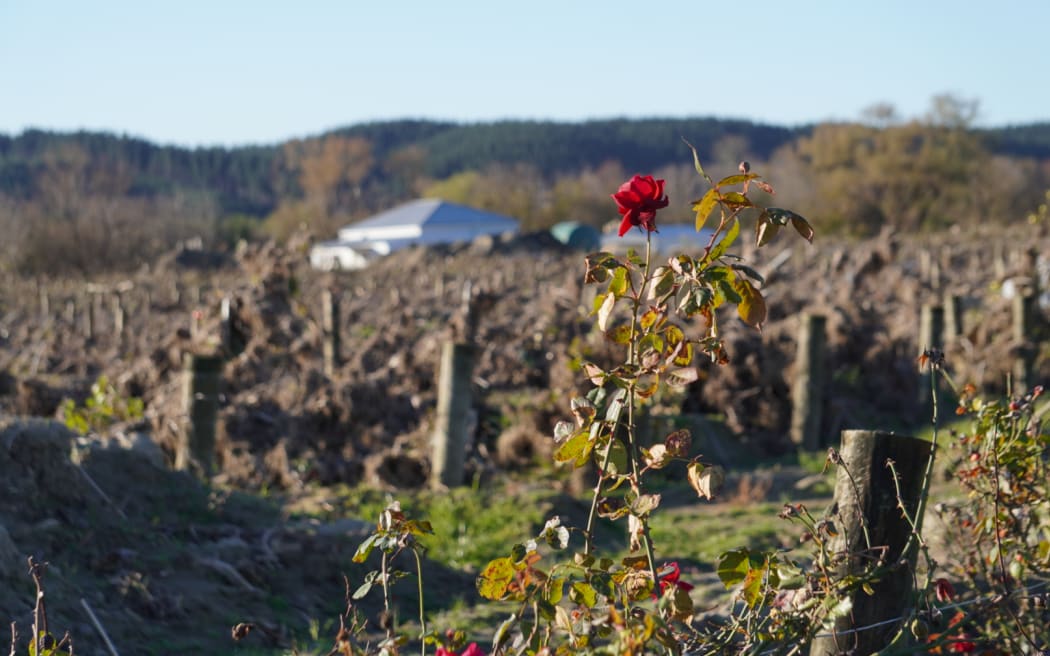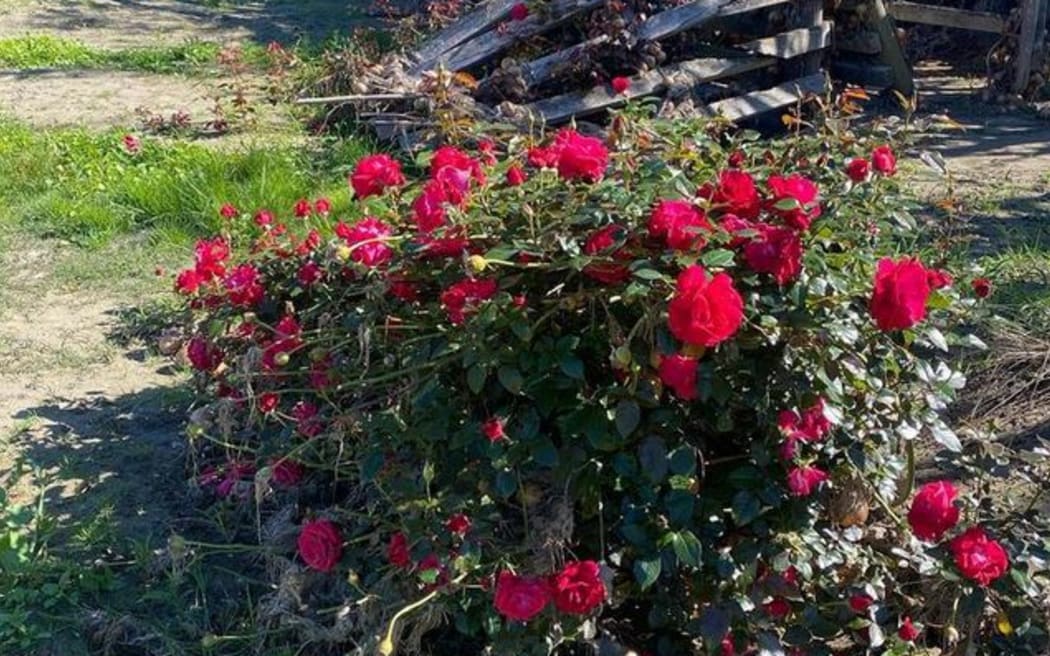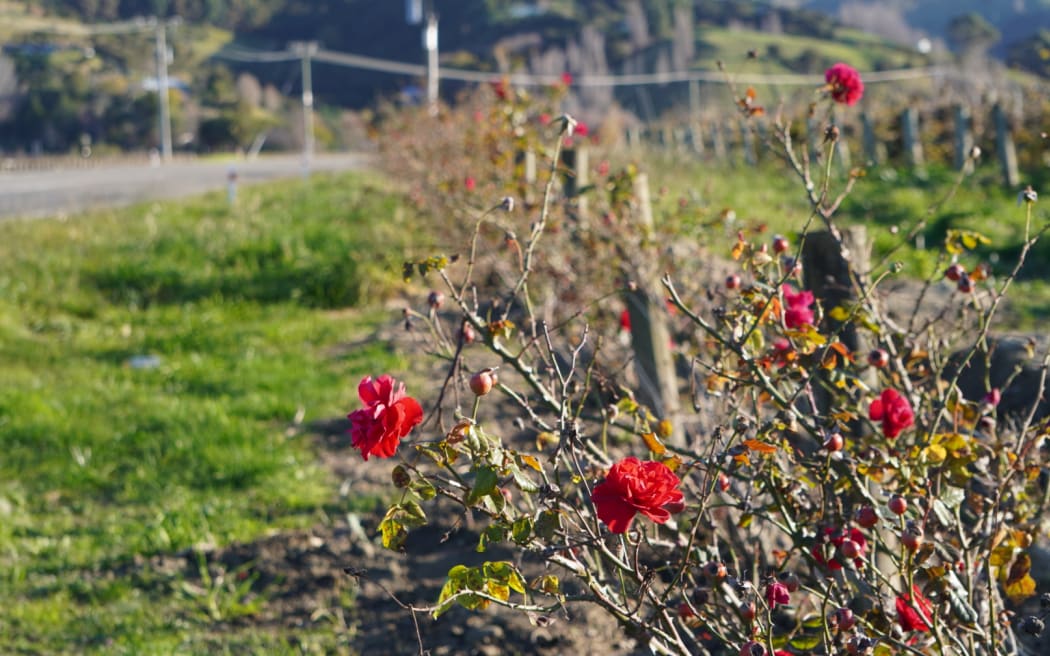
A splash of scarlet against the mud and debris from Cyclone Gabrielle. Photo: RNZ/ Kate Green
Along the fence lines of the cyclone-devastated Esk Valley, red roses still turn their little faces towards the pale winter sun, and their unusual flush this year has turned heads.
Gardeners throughout the Hawke's Bay region have expressed their delight and surprise at the beautiful blooms still on show in their flood-damaged gardens.
Former Puketapu resident Amy Bowkett's property was completely inundated with floodwater, her fruit trees toppled, and she is now living in Napier.
"When we went back to check on the property, out of all the mess were all these bright splashes of colour from all my rose bushes. That was in about April - May, when roses are usually starting to die off a bit."
She said gardeners normally pruned their roses around King's Birthday weekend, but this year they had been left to flourish well into the cold season - and were not suffering from neglect.

Amy Bowkett's roses, still blooming magnificently in April this year, in post-cyclone Esk Valley. Photo: Supplied/ Amy Bowkett
"They really have taken off, and driving around Hawke's Bay I have noticed that they're still putting out new flushes of growth."
Lincoln University associate professor of soil and physical sciences Peter Almond said this could be down to a couple of things.
"The silt, depending on how thick it is, if it's a relatively thin dressing of it, may be acting as a mulch."
Mulch prevented water loss from the soil - and as those with homes still with a thick layer of silt beneath them beneath them would know, it was also very good at holding moisture.
"The other thing that it could be is that, being very fine-grained, this silt, it starts to chemically weather quite quickly, and it may be that there's a flush of nutrients like potassium to the soil," Almond said.

These red blooms line the flood-damaged properties along State Highway 5 through Esk Valley Photo: RNZ/ Kate Green
Bowkett said it was funny that roses - often such finicky plants - were thriving in these, of all, conditions: "If you want your roses to thrive, just dial up a cyclone."
But with their bright appearance came a certain amount of sorrow, likely echoed by anyone around the region who lost years of love and hard work in their gardens to flood water.
"My neighbours were like, 'Oh, you need to go and take cuttings and transfer them to your new house,' but I can't bring myself to - I think every time I looked at them I'd be sad."
Bowkett said she hoped this was not just a "last gasp of life" before the plant packed it in, and wondered if they would continue to come away next season.
Gardening expert and writer Lynda Hallinan said it was not uncommon for roses to thrive after a flood.
The wet weather this past summer might have been just what they needed, and this year had been very wet, even aside from the cyclone event.
"[Roses] actually don't mind being buried deep in good, moist soil, and so a dousing of silt is like a free feed for roses."
But she warned their beauty might be short-lived.
"They do tend to flourish after an event like that - bad news is that potentially they won't do that again long-term. So if you've got really good roses now, you might need to dig them up and start again."






